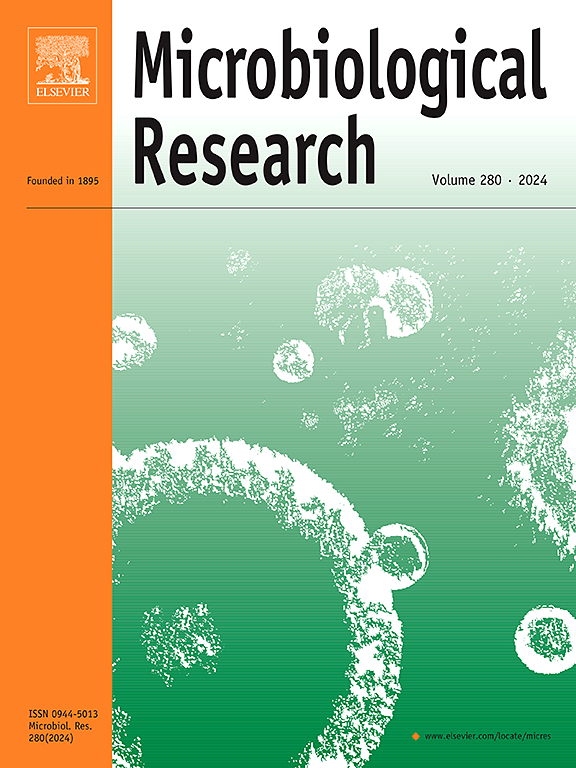Role of R5 pyocin in the predominance of high-risk Pseudomonas aeruginosa isolates
IF 6.9
1区 生物学
Q1 MICROBIOLOGY
引用次数: 0
Abstract
Infections with antimicrobial-resistant pathogens, such as Pseudomonas aeruginosa, are a frequent occurrence in healthcare settings. Although human P. aeruginosa infections are predominantly caused by a small number of sequence types (ST), such as ST235 and ST111, that are frequently multidrug-resistant, the basis for this dominance remains unclear. Using a genome-wide, transposon-insertion library screen, we discovered that the production of R5 pyocins (one of 5 subtypes of R pyocins) confers a competitive advantage to ST111 strains. Competitive dominance was lost by mutants lacking R pyocin production. Analysis of 5135 P. aeruginosa strains revealed that several international, high-risk sequence types (including ST235 and ST111) are enriched for R5 pyocin production, indicating a correlation between R5 pyocin production and clinical dominance, suggesting a novel approach for evaluating risk from emerging P. aeruginosa strains. An ST235 strain also lost its competitive advantage after deletion of an R5 pyocin structural gene, corroborating these findings. Overall, our study sheds light onto mechanisms underlying predominance of particular clades of antimicrobial resistant bacteria.
R5脓毒素在高风险铜绿假单胞菌分离株中的优势作用
抗微生物药耐药病原体感染,如铜绿假单胞菌,在卫生保健机构中经常发生。尽管人类铜绿假单胞菌感染主要由少数序列型(ST)引起,如ST235和ST111,这些序列型通常具有多重耐药性,但这种优势的基础尚不清楚。利用全基因组转座子插入文库筛选,我们发现R5 pyocins (R pyocins的5种亚型之一)的产生赋予ST111菌株竞争优势。缺乏R - pyocin产生的突变体丧失了竞争优势。5135的分析 P。铜绿假单胞菌(P. aeruginosa)菌株显示,几种国际上高风险序列类型(包括ST235和ST111)富含R5脓毒素的产生,这表明R5脓毒素的产生与临床优势度之间存在相关性,为评估新出现的P. aeruginosa菌株的风险提供了一种新的方法。ST235菌株在缺失R5 pyocin结构基因后也失去了竞争优势,证实了这些发现。总的来说,我们的研究揭示了抗菌耐药细菌特定分支优势的机制。
本文章由计算机程序翻译,如有差异,请以英文原文为准。
求助全文
约1分钟内获得全文
求助全文
来源期刊

Microbiological research
生物-微生物学
CiteScore
10.90
自引率
6.00%
发文量
249
审稿时长
29 days
期刊介绍:
Microbiological Research is devoted to publishing reports on prokaryotic and eukaryotic microorganisms such as yeasts, fungi, bacteria, archaea, and protozoa. Research on interactions between pathogenic microorganisms and their environment or hosts are also covered.
 求助内容:
求助内容: 应助结果提醒方式:
应助结果提醒方式:


